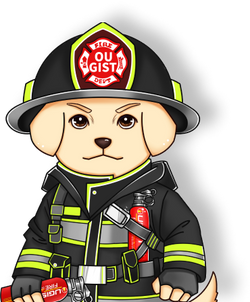Fire safety is paramount, especially in the kitchen, where the risk of fire is higher due to cooking activities. Having a functional fire extinguisher is a crucial part of your kitchen safety equipment. But have you ever wondered how often you should replace it? In this blog post, we will explore the recommended guidelines for replacing your kitchen fire extinguisher to ensure optimal fire preparedness.
Understanding Fire Extinguisher Types
Before delving into replacement intervals, let's first understand the types of fire extinguishers commonly used in the kitchen. There are various classes of fire extinguishers, but for most kitchens, the two main types are:
-
Class B: Dry Chemical Fire Extinguishers - Suitable for extinguishing fires involving flammable liquids like oil and grease commonly found in kitchen settings.
-
Class K: Wet Chemical Fire Extinguishers - Specifically designed for kitchen fires involving cooking oils and fats.
Manufacturer's Recommendations
Fire extinguisher manufacturers often provide guidelines on when to replace their products. Generally, they suggest replacing fire extinguishers every 5 to 15 years from the date of manufacture. This timeframe is set based on the typical lifespan of the internal components and pressure seal.
However, it's essential to note that certain factors can affect the actual lifespan of a fire extinguisher. These factors include exposure to high temperatures, humidity, physical damage, or corrosive environments. Inspect your fire extinguisher regularly for signs of wear and tear.
Regular Inspections
To ensure your kitchen fire extinguisher is in good working condition, perform regular inspections. Follow these steps:
-
Check the Pressure Gauge: Verify that the pressure gauge needle is within the green "charged" area. If it falls below the acceptable range, the extinguisher may require servicing or replacement.
-
Inspect the Nozzle and Hose: Ensure the nozzle and hose are free from obstruction and damage. A blocked or damaged nozzle can significantly impact the extinguisher's effectiveness.
-
Look for Physical Damage: Examine the body of the extinguisher for any signs of rust, dents, or other physical damage. If the integrity of the extinguisher is compromised, it should be replaced immediately.
-
Check the Safety Pin and Tamper Seal: Ensure the safety pin is intact, and the tamper seal is unbroken. These features indicate that the extinguisher has not been used or tampered with.
Training and Education
In addition to maintaining and replacing your kitchen fire extinguisher, it's crucial to educate everyone in your household or establishment about its proper use. Fire extinguishers are only effective when used correctly. Conduct regular fire safety drills and ensure everyone knows how to operate the extinguisher in case of an emergency.
Remember, a fire extinguisher is not a one-time purchase; it requires regular attention and maintenance to function effectively when needed. Always stay vigilant and prioritize fire safety in your kitchen and throughout your home or business.
Stay safe, and be prepared!
Disclaimer: This blog post provides general information and recommendations. For specific guidelines regarding your fire extinguisher, always refer to the manufacturer's instructions and consult with fire safety professionals when necessary.


